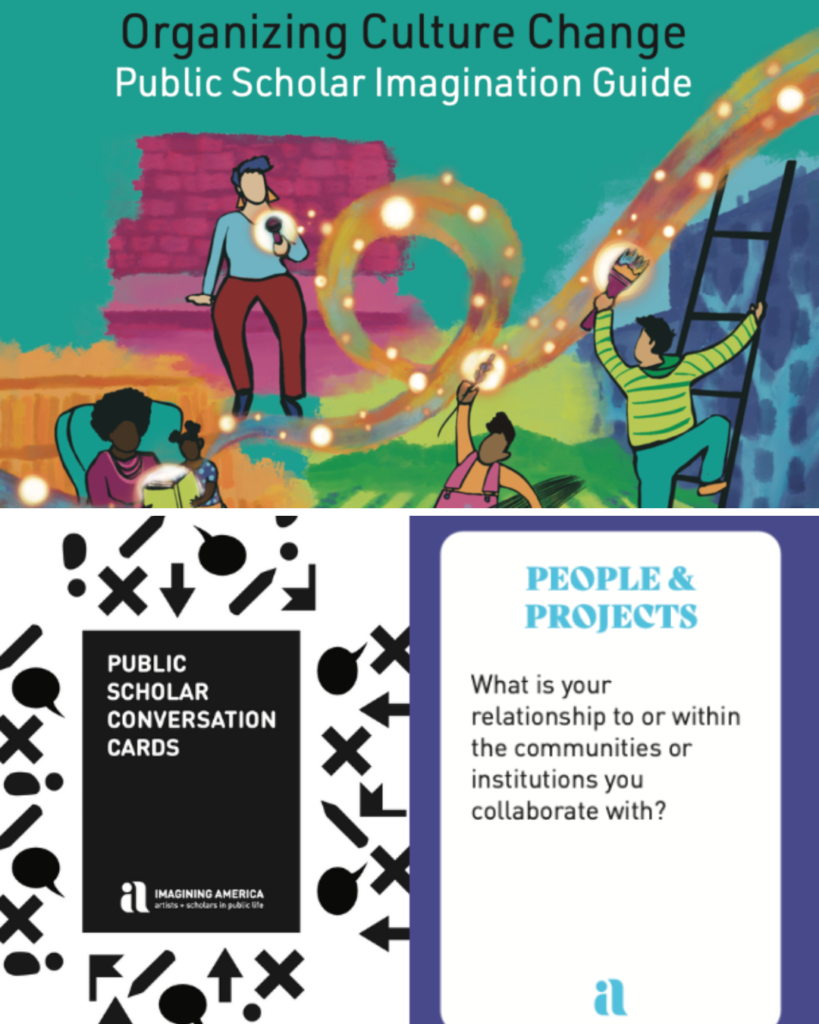Midnimo
Jill Dawe, Augsburg University
Abdirizak “Harbi” Kahiye
Abstract
Midnimo (Somali for “unity”) is a partnership of The Cedar Cultural Center and Augsburg University in Minneapolis that launched performances, artist residencies, workshops and educational events to introduce international and local Somali artists to new audiences. The program received funding from the Doris Duke Foundation for Islamic Arts and Culture and Building Bridges who sought to engage the arts to educate about Muslim cultures and decrease Islamophobia. The Midnimo program was unique in that the focus was not to merely provide experiential education for non-Muslim and/or non-Somali audiences, but also to allow areas for cultural and artistic revitalization in the Somali diaspora.
Partnering with a local non-profit global music venue and a university allowed Midnimo to pool resources, access expertise and offer programming that neither organization could achieve on its own and resulted in meaningful intercultural interactions and exchanges. Midnimo’s collaborative processes expanded beyond the Twin Cities to outstate Minnesota communities with large Somali immigrant communities and grew to include Paramount Center for the Arts in St. Cloud, St. Cloud State University, and University of Minnesota, Makato as well as key community partners. Cumulatively, Midnimo programming has resulted in an increase in shared knowledge, civic engagement, intercultural communication, and has built trust and incentive for collaboration between and within communities.
Project Narratives
A Program of The Cedar Cultural Center and Augsburg University
“…After learning that live performances of Somali music had all but died after Somalia’s military regime banned them, The Cedar and nearby Augsburg College [now University] worked together with Somali performers to transcribe and revive it on stage. In the process, trust developed and relationships deepened, and audiences of every demographic embraced the joint performances by Somali icons and Augsburg musicians. An external evaluation of the project identified both a change in the non-Somali population’s perceptions of the American Somali community, and a greater sense of belonging among American Somali youth, many of whom now frequent The Cedar.”
Excerpt from Where Walls Exist the Arts Provide a Doorway by Zeyba Rahman, senior program officer for the Building Bridges Program, Doris Duke Foundation for Islamic Art (DDFIA), an extension of The Doris Duke Foundation for Charitable Giving.
I. BACKGROUND AND BEGINNING
Midnimo (which means “Unity” in Somali), is a program of The Cedar Cultural Center and Augsburg University, formally launched in 2014 with significant funding from The Doris Duke Foundation for Islamic Art (DDFIA). Pairing an arts organization with a university, Midnimo features international and local Somali artists-in-residence, concerts, educational workshops/curricula and community activities designed “to increase knowledge and understanding of Somali Muslim culture through music.” Midnimo engages many stakeholders. The project is simultaneously a complex web of narratives, a springboard for community-building, and an innovative interdisciplinary curriculum. It presents professional music shows, provides a meaningful counterpoint to Islamophobia, connects Somali diaspora communities to the arts and culture of Somalia, and it is a source of transformative information for funders, students, and intergenerational Somali- and non-Somali Minnesotans.
A new type of collaboration for The Cedar Cultural Center and Augsburg, Midnimo has impacted local, regional, national, and international platforms — sometimes in unexpected ways. For example, Midnimo became a brand (of sorts) when almost 100 miles away, a Minnesota State Mankato professor was asked, “are you the Midnimo lady”? Similarly, on the Augsburg campus, a Somali-American staff member told a Midnimo musician, “Midnimo makes me proud to be Somali.” When Cedar staff first reached renowned Somali singer Maaryam Marsal by phone in London, England, Marsal told them, “I already know about Midnimo.” When a video of Mankato, MN school children singing in Somali was posted on social media, the mayor of Mogadishu, Somalia noticed and Tweeted about it.
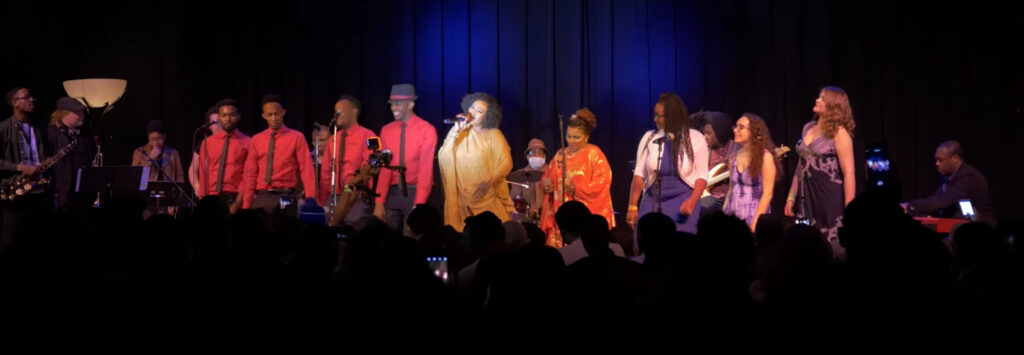
II. PROXIMITY AND PLACE-BASED LEARNING
The West Bank or Cedar-Riverside neighborhood, also known as “Little Mogadishu” is home to The Cedar Cultural Center, Augsburg University and a large Somali immigrant community.
Cedar Cultural Center (The Cedar)
The Cedar is a highly eclectic music venue located in the Cedar Riverside neighborhood of Minneapolis, Minnesota. Since 1989, The Cedar has been a leader in presenting the works of acclaimed and innovative performing artists from around the world. The Cedar’s mission is “to promote intercultural appreciation and understanding through the presentation of global music and dance. The Cedar has worked to engage neighborhood organizations, elders from the Somali-American community, as well as other civic and educational institutions in developing and hosting events that incorporate the arts. These partnerships make it possible for the venue to provide positive, creative outlets for youth and other residents of the Twin Cities Somali-American communities.
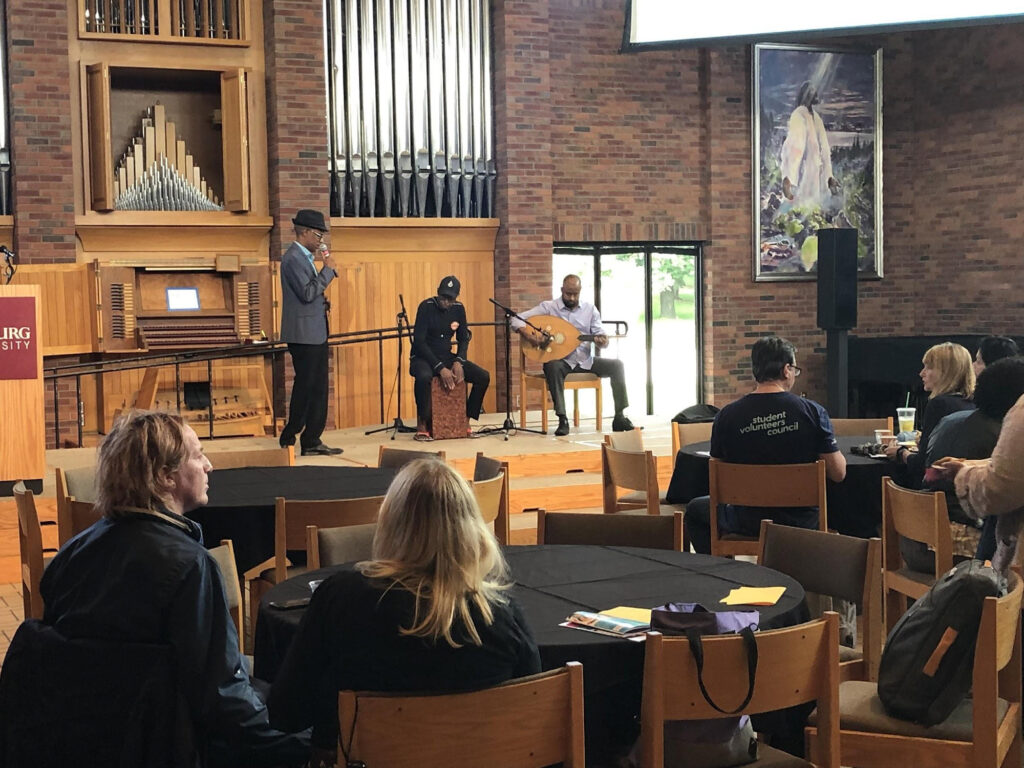
Augsburg University
Augsburg is a private, coeducational liberal arts college located in the Cedar Riverside neighborhood of Minneapolis, Minnesota. It was founded as Augsburg Seminary in 1869 as a Norwegian-American Lutheran Seminary. Augsburg’s mission is to educate students to be informed citizens, thoughtful stewards, critical thinkers, and responsible leaders. Today, Augsburg’s commitments reflect the values and principles held by its founders, who believed an Augsburg education should prepare students for service in the community through a solid grounding in liberal arts, and the integration of urban surroundings as a learning laboratory.
Cedar Riverside/West Bank
The Cedar Riverside neighborhood, also known as West Bank, has a long history of being home to immigrant communities. It is shaped by Swedish, Finnish and Danish communities, followed by Koreans, Ethiopians and East Africans, as well as university students. During the past two decades, Cedar Riverside has become the largest Somali diaspora community outside of Africa and earned the nickname, “Little Mogadishu.” Cedar Riverside’s most recent residents have become vitally important to the social and economic landscape of the neighborhood and across the state of Minnesota, as evidenced by the growing number of Somali businesses, local leaders, and community organizations. Nevertheless, the Somali community has faced challenges, particularly around discrimination and marginalization. There are a number of disparities in health, education, and employment outcomes for Somali communities. Somali communities are also often segregated from other populations, despite the proximity of the Cedar Riverside neighborhood to Augsburg University and the University of Minnesota. Challenges that the Somali immigrant community faces include: economic hardship (many Cedar Riverside neighborhood residents live below the poverty level), strained relationships between elders and youth, disconnectedness from the broader Somali diaspora, and concerns that community youth are targets for recruitment by both local gangs and extremists abroad.
Negative press has been of concern, and Minnesota’s Somali community was in the spotlight as a number of young Somalis were suspected of leaving Minnesota to join ISIS in Syria. More than half of Cedar Riverside’s residential population is under the age of 24, many of whom are first-generation U.S. residents and citizens. The challenges of the social, cultural, and spiritual transition to living in the United States has resulted in strained connections for many within the Twin Cities Somali community.
The vibrant performing arts history of Somalia (the “Nation of Poets”) was almost entirely wiped out by the Somali Civil War that began in the mid-1990s. During this protracted conflict, artists’ instruments and recordings were looted, musical groups were disbanded, and rising religious conservatism called for the prohibition of music and performing arts, on the grounds that these activities promoted lewd and lascivious behavior. Today’s Somali Artists still grapple with the effects of this conflict. Exacerbated by a lack of resources, many previously established Somali musicians around the world face significant challenges in continuing their art. Throughout the diaspora, singers have slowly (re)emerged, but bands and instrumentalists have been slower to revive.
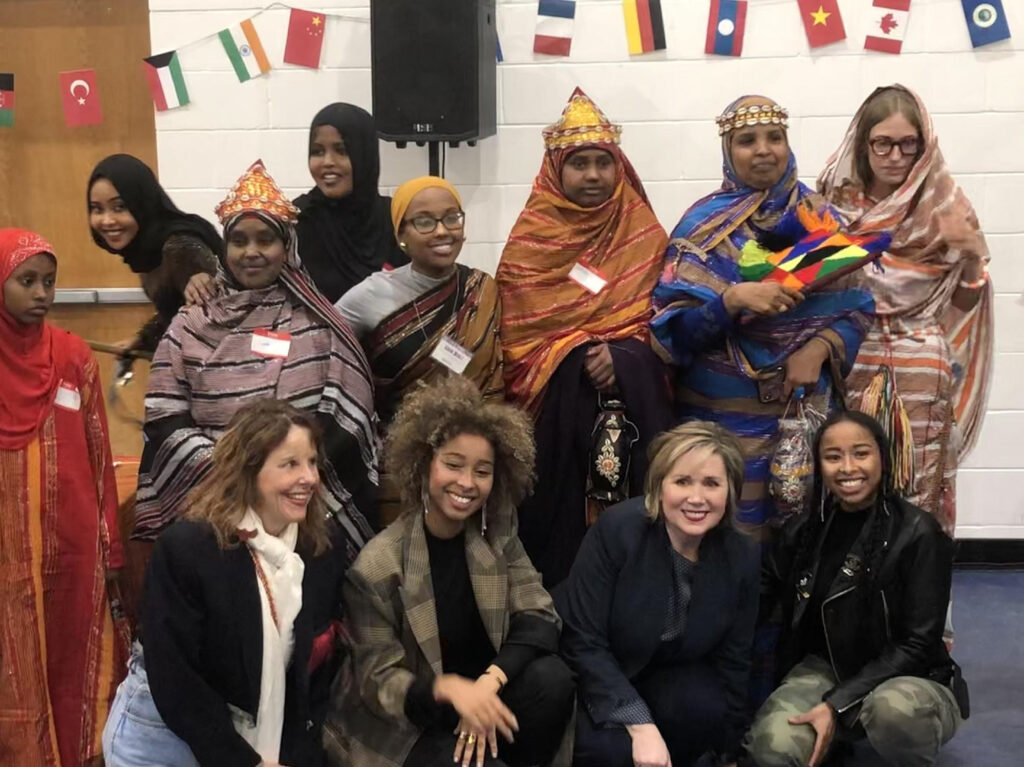
III. EXPANDED REACH
In 2016, building on two years of intensive programming experience, Augsburg and The Cedar expanded Midnimo to outstate Minnesota to form a consortium with Paramount Center for the Arts in St. Cloud, St. Cloud State University, and Minnesota State University, Mankato. This consortium was funded by the Association of Performing Arts Professionals (APAP) via two grant programs (Building Bridges: Arts, Culture and Identity, and Building Bridges: Campus and Community Engagement). Midnimo also received local and state funding, and its programs spread beyond the Twin Cities to communities with large Somali immigrant populations.
Over time, curricula and programming evolved from class visits and panel presentations to collaborative performances and meaningful community activities and events. Increasing awareness of intersectional diversity and appreciation of the great variety of Somali musical styles was evident, and relationships and trust deepened.
Students rehearsed and co-created music with Somali artists, and Somali music and artists and students regularly performed music at on- and off-campus events. As the final report stated: “through Midnimo, [Augsburg] students experienced and normalized interactional diversity.” The roles of community partners also shifted to create more balanced decision-making and collaborative processes.
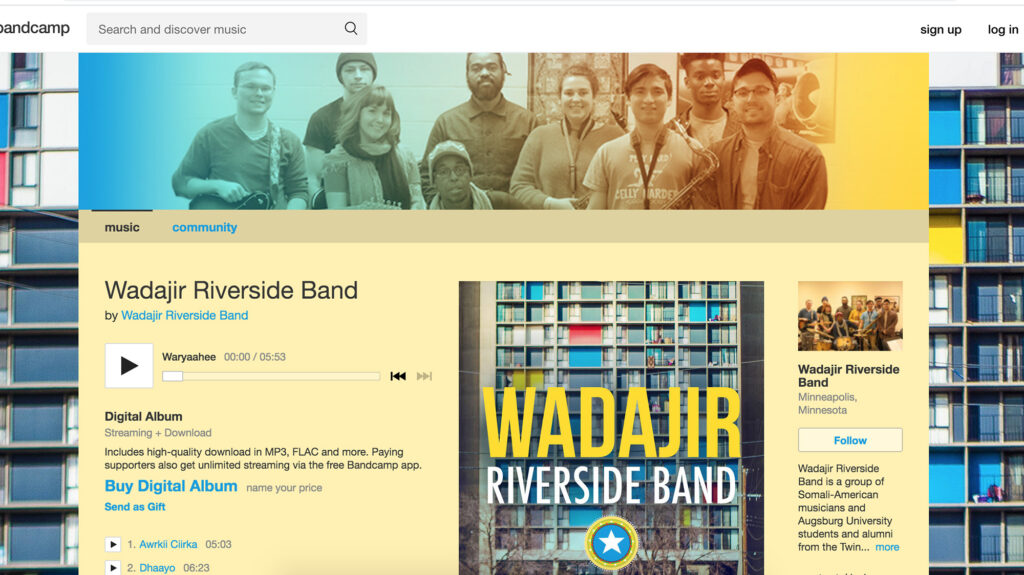
A Track of a student written song and video linked here: “Matthew’s Song” track 7—BandCamp
“The core concept of this song was to distill the sounds and styles that I found most ear-catching over the years, playing with Midnimo. I attempt to mimic and recreate the qualities of the music I heard, as well as fuse it with the improvisational background that each student in the band hails from”. Additional student performances and information found here.
Midnimo leveraged requisite institutional support from Augsburg which, when combined with a highly-skilled events staff from The Cedar, enabled Midnimo’s impacts to grow and eventually reach beyond Augsburg to the neighborhood, the Twin Cities, the state of Minnesota, and around the US (and the world). Midnimo is the result of many individuals and organizations collectively creating something that neither could accomplish without the others.
From the “Building Bridges” Final Report by Amina Jaafer, Ph.D:
“The Midnimo program was unique in that the focus was not to merely provide experiential education for non-Muslim and/or non-Somali audiences, but also to allow areas for cultural and artistic revitalization in the Somali diaspora. This project provides The Cedar, Augsburg University, and community partners opportunities to engage in meaningful intercultural interactions and exchanges”.
****
It is worth noting that during these years Islamophobia increased locally and nationally and negative press for Minnesotan Somali immigrants reached the unprecedented level of national political discourse during the 2016 U.S. presidential election campaign when Somali immigrants in St. Cloud, Minnesota were cited as examples of the negative impact of immigration on the United States.
Following the election, Midnimo programming was greatly impacted by changes in international travel policy — namely the so-called “Muslim Travel Ban” implemented by the Trump Administration in 2017. Such challenges provided many ‘teaching moments’. For example, increased scrutiny toward International Artist Visas allowed students to experience the tense connections between local/international politics/policy and their personal lived experiences.
And, conversely, student learning experience informed off-campus entities as well. For example, in 2017, BBC International Radio with host Owen Bennett Jones was in Minneapolis for a special international feature, “Somalis in America: a Community under Pressure.” An unplanned act of coincidental timing allowed the BBC broadcasters to stop by a student/community Midnimo rehearsal in progress at the Augsburg music building where they experienced a positive counter-narrative to negative press portraying many in the Minnesotan Somali community.
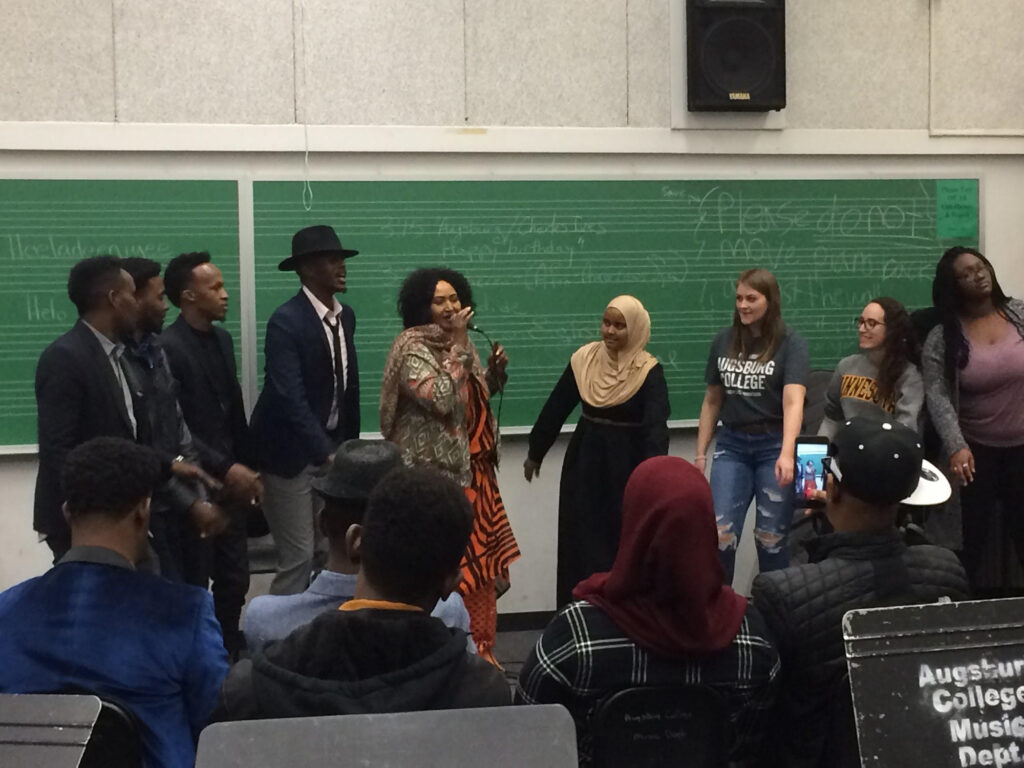
IV. IMPACT How to Define Success and Who Defines Success?
The stakeholders of Midnimo are many, and experiences wide-ranging. The following are selected assessments by a handful of people and organizations reached by Midnimo. Collectively they may be viewed as a diversity of approaches to measure meaningful work that is personal, institutional, regional, national and global.
1. Music:
A YouTube video of International Somali Midnimo artist, Nimco Yasin teaching a song to Augsburg students and community members in preparation for singing onstage at The Cedar has been viewed more than143,000 times.
Midnimo artist, Aar Maanta, local Minnesotan artists and Cedar-Riverside youth co-created and recorded the first bilingual Somali Children’s Album, “ Ubadkaa Mudnaanta Leh” featuring the art and poetry of the Cedar-Riverside children. Released worldwide.
2. Abdirizak Bihi, esteemed community member, advocate and unofficial mayor of Little Mogadishu and 2021 Ward 6 Candidate for City Council, is quoted in the Minneapolis The Star Tribune:
“The people at the Cedar, KFAI, Augsburg, Mixed Blood, they have helped us show our young people their positive roots. I completely believe without art we could never move forward from the war.”
3. An international Midnimo artist’s perspective: International Midnimo star, Aar Maanta as quoted in an interview for the St. Cloud Times:
I kicked off my [Midnimo] residency with a talk and performance at this year’s Nobel Peace Prize Forum in Minneapolis. I discussed my anti-human trafficking work and sang about secondary migration issues.
My band and I then kicked off the Cedar’s Global Roots Festival. Then we moved to the city of Mankato in Minnesota where we spent a week socially and musically engaging with the community. My experience (with Midnimo) has been rewarding personally and professionally. Professionally, I developed so much experience by working with so many diverse people in such a short time. Personally, I gained so much confidence in my ability to perform and conduct my work.
International Somali singer and Midnimo artist, Aar’s song, “Tahrib” became part of a campaign by the United Nations’ to help address and end human trafficking. The Nobel Peace Prize Forum is a forum for local, national and international scholars to present research on peace. It rotates locations and is held on various Minnesotan university campuses.
4. Funders
“How can we help our communities thrive?” In attempting to answer this question, the insights that [Doris Duke Foundation] and these organizations collectively unearthed have revealed themselves to be vastly more essential to successful practices than we could have originally imagined. With this recognition, we knew that we must share this treasure trove of best practices, so that more artists and organizations can gain from the value of their peers’ insights.” APAP website
5. The Mayor of Mogadishu
Midnimo programming has an international reach and has been enjoyed by people around the world, and throughout the Somali diaspora, sometimes in unexpected ways. For example, a school concert of children singing a Somali song in rural Minnesota was viewed by the mayor of Mogadishu and he Tweeted about it. Another example: concerts at The Cedar were livestreamed around the world, including to relatives in refugee camps, via audience members’ cell phones.
6. Augsburg student: “You learn just from talking to people. You learn about religion. You learn about culture. You learn about what it all means to each person. This is our neighborhood. We’re all here together and we can learn from and with each other.”
Augsburg music students collaborated with Somali musicians to learn and perform musical styles not happening elsewhere in the world, and to experience music as civic engagement and intercultural learning. Students received invitations to perform at the Minnesota Orchestra’s first “Day of Music”; completed a professional regional tour; performed at The American Sociological Association Convention, Place-Based Justice and American Musicological Society national convenings; an Eid celebration, a Somali fashion show and many other events.
7. Midnimo Community partner, Somali-Minnesota mother, Educator:
“Each one of these students will go home and talk about their experience to their families. That’s the ripple effect that will go on for generations, hopefully”.

Submitted by: Jill Dawe, associate professor of music, Augsburg University unless otherwise noted, all photo credits are Jill Dawe
